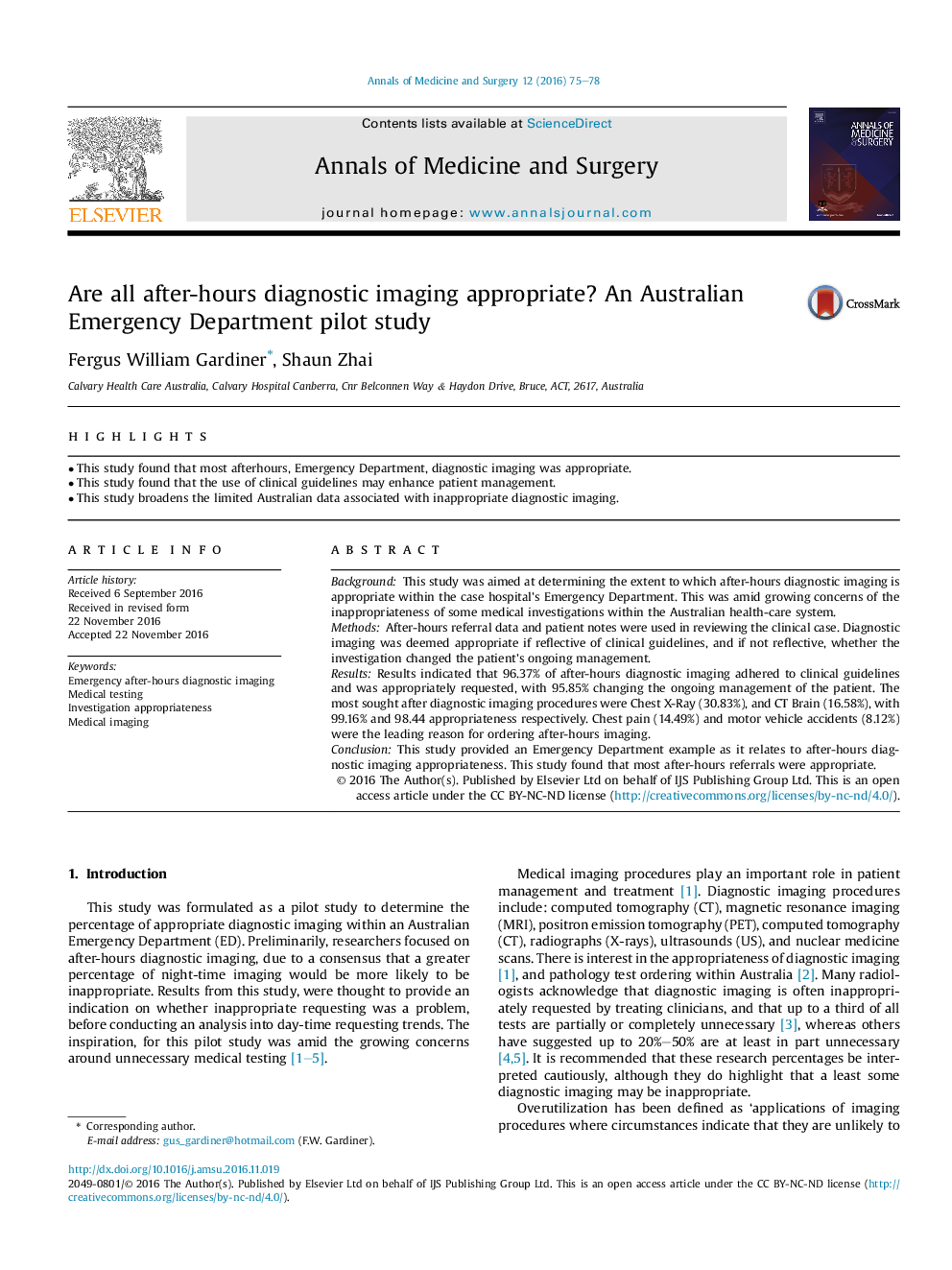| کد مقاله | کد نشریه | سال انتشار | مقاله انگلیسی | نسخه تمام متن |
|---|---|---|---|---|
| 5723120 | 1608916 | 2016 | 4 صفحه PDF | دانلود رایگان |
- This study found that most afterhours, Emergency Department, diagnostic imaging was appropriate.
- This study found that the use of clinical guidelines may enhance patient management.
- This study broadens the limited Australian data associated with inappropriate diagnostic imaging.
BackgroundThis study was aimed at determining the extent to which after-hours diagnostic imaging is appropriate within the case hospital's Emergency Department. This was amid growing concerns of the inappropriateness of some medical investigations within the Australian health-care system.MethodsAfter-hours referral data and patient notes were used in reviewing the clinical case. Diagnostic imaging was deemed appropriate if reflective of clinical guidelines, and if not reflective, whether the investigation changed the patient's ongoing management.ResultsResults indicated that 96.37% of after-hours diagnostic imaging adhered to clinical guidelines and was appropriately requested, with 95.85% changing the ongoing management of the patient. The most sought after diagnostic imaging procedures were Chest X-Ray (30.83%), and CT Brain (16.58%), with 99.16% and 98.44 appropriateness respectively. Chest pain (14.49%) and motor vehicle accidents (8.12%) were the leading reason for ordering after-hours imaging.ConclusionThis study provided an Emergency Department example as it relates to after-hours diagnostic imaging appropriateness. This study found that most after-hours referrals were appropriate.
Journal: Annals of Medicine and Surgery - Volume 12, December 2016, Pages 75-78
